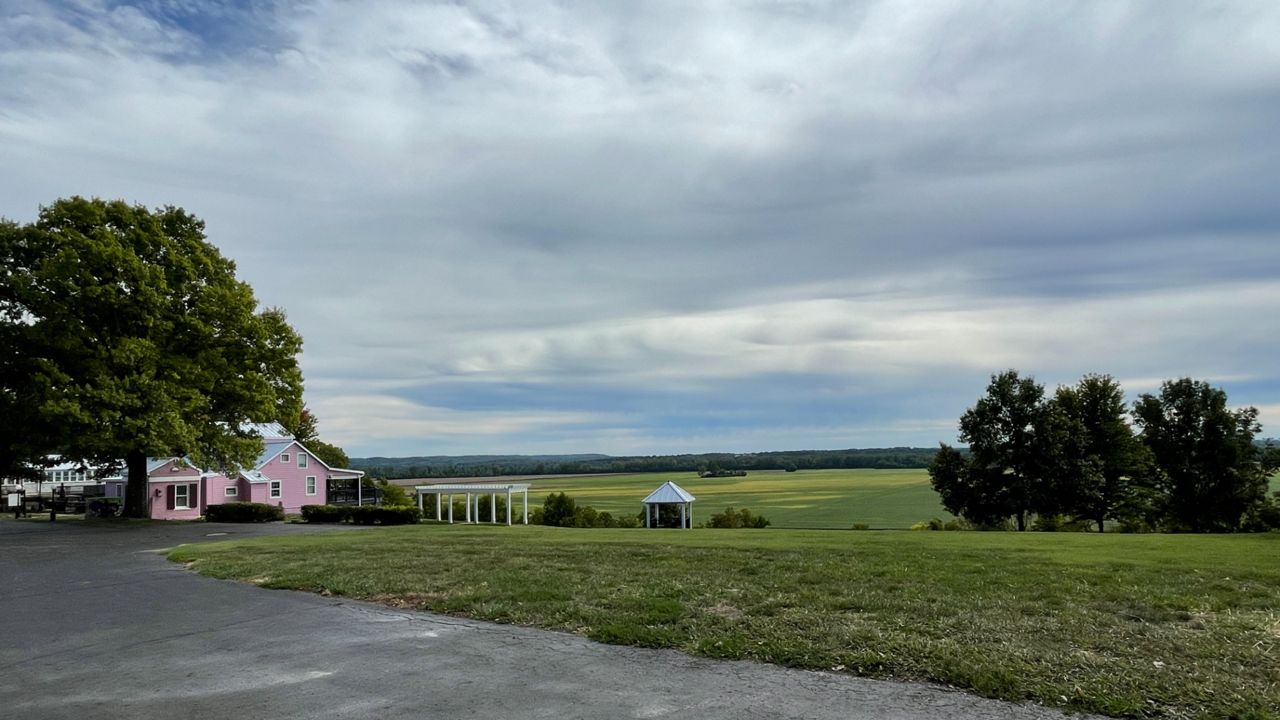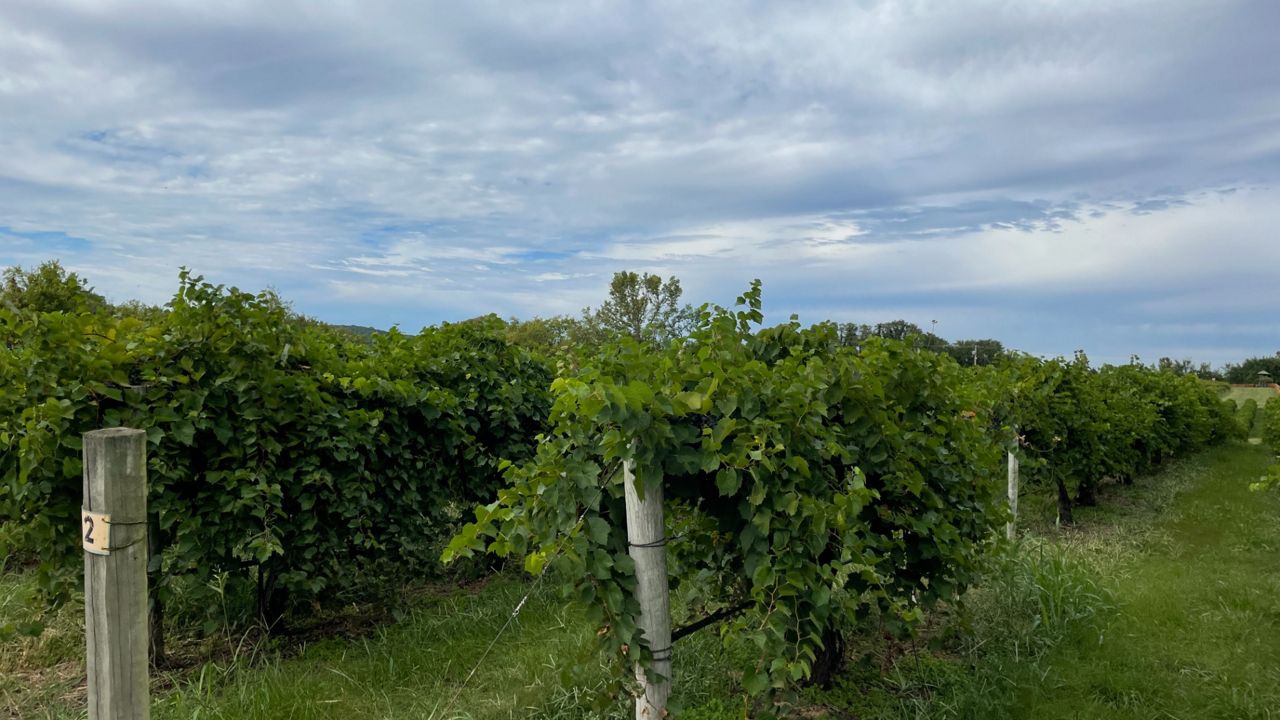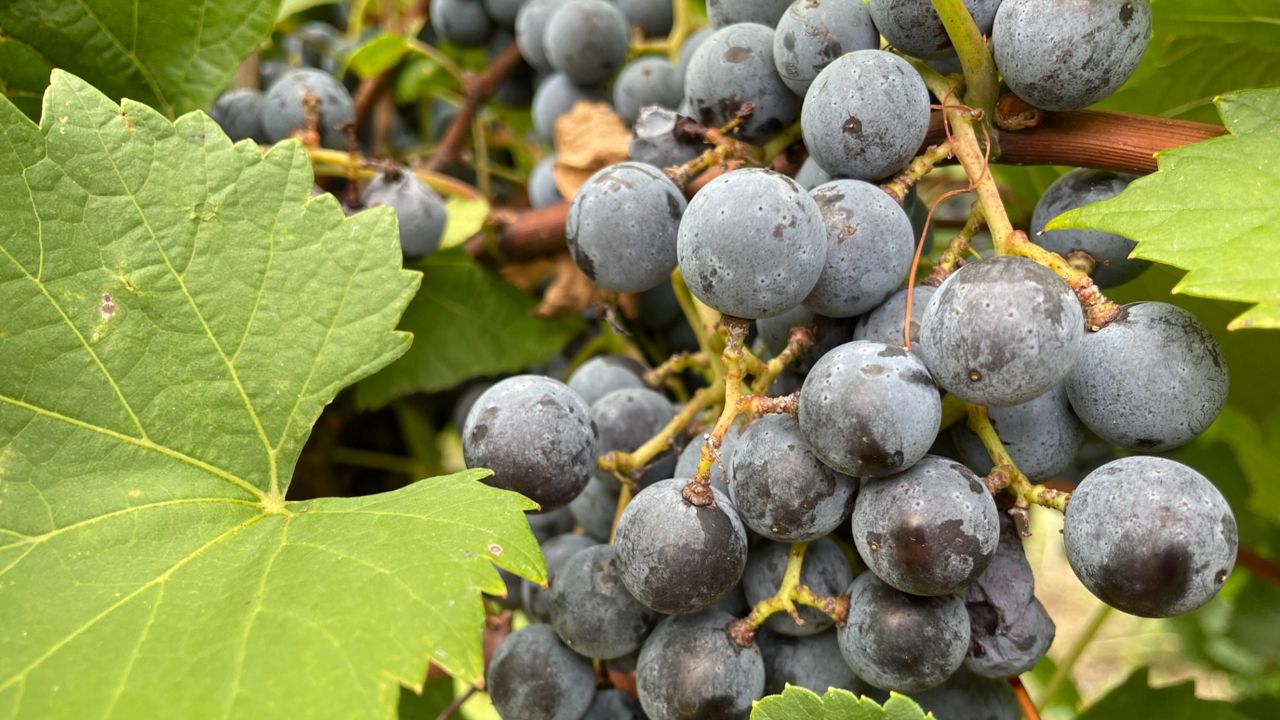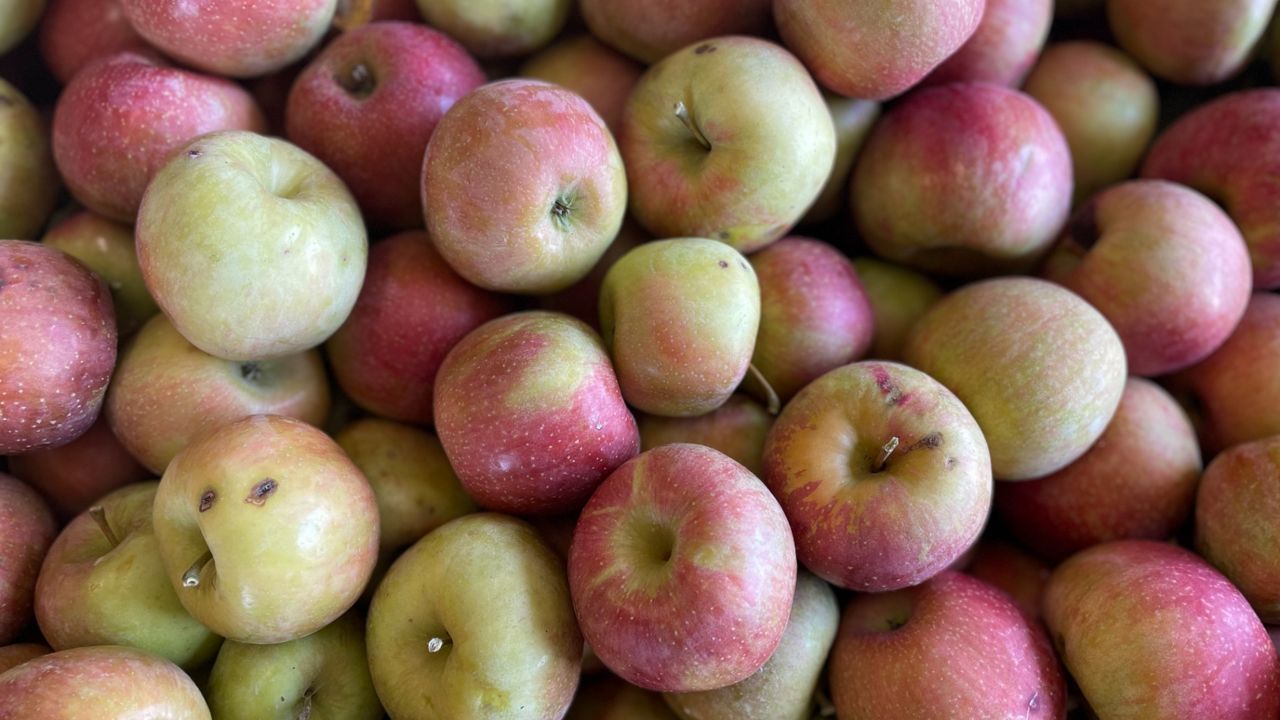AUGUSTA, Mo. — When one thinks of wine, they may consider the well-known regions, say, Sonoma or Napa in California. However, Missouri ranks number 10 in wine production and is emerging as a Top Wine Region in the United States.
The climate in this region provides ideal weather for growing grapes to create different varieties of wine. Selections like Vignole, Norton (from the Missouri state grape Norton), Chambourcin, Vidol and Chardonel are some of the most popular.
Driving west along Route 94 in St. Charles County parallel to the Katy Trail along the Missouri River, you encounter the town of Defiance, a 40 minute drive from downtown St. Louis, and the entrance to the area’s wine region. Here, you will find signs for several of the area’s wineries and vineyards.
Drive another 10 minutes down the road, turn left on Jackson Street, passing vineyards on your right and you will arrive in the town of Augusta, an eclectic hidden gem of old and new. A town of less than 300 residents provides an ideal retreat for city dwellers with several wineries, B &Bs and antique shops.
Turning right onto High Street takes you to Mt. Pleasant Winery, a winery that has stood the test of time. With several insignia of 1881, the buildings that have hosted wine making have been around for just over 240 years boasting a lot of history.
In fact, according to Assistant Wine Maker Greg Forbis, the town of Augusta was once known as the town of Mt. Pleasant. He says this region was globally known for wine prior to prohibition, however, most vineyards got destroyed during prohibition, leaving winemakers to flee the region and restart in California.

As Forbis will tell you, grape growing and winemaking aren’t for the faint of heart. Your entire crop depends on weather and too much or too little of one thing can alter your production.
Clearly, this region has the climate to grow grapes and while Mother Nature does most of the work, Forbis and his team know how to make the best of what Mother Nature does or doesn’t provide.
Planting grapes takes place in the spring, usually April or May, after the concern for frost is done. However, Missouri can have finicky weather and that’s what happened in 2020.
Early spring warmup caused the planted grapes to bloom, but a late season frost had catastrophic effects. “Some varieties had already started doing blooms, and some vineyards lost 30–60% of grapes,” explained Forbis.
With the grapes well established here in Missouri, the heat and humid of the summer doesn’t provide too much of a concern as root tolerance levels remain high. As the grapes take root and winter approaches, Forbis says that as long as there aren’t extreme cold outbreaks, the grapes will be able to handle the cold of the region.
Rainfall is important in the growing process of grapes, but as Forbis points out, too much rain isn’t good for the crop. “Too much rain will lead to mold, mildew, rot. We kind of like it on the drier side.”
Stating that “sun is a grape’s best friend, a good 8–9 hours of sun.” Grapes don’t mind the drier periods. Drought isn’t as much a concern because grapes have been grown here for centuries and have become more resilient to the dry periods. Forbis’ team will water once a week to nourish the roots.

“Summer weather doesn’t really impact the crop too much,” and thankfully, the heavy rains this past summer were well managed. The Viticulturalist and his team made sure there was no mildew or disease that sprang up from the rain.
Two times of the year, you don’t want too much rain are when the grapes are first starting to bloom and the second is during harvest, which is occurring currently. “Right now, we don’t want rain right before we harvest because we will get grape swell and that will lower the sugar content and the juice we get and that will make it harder to ferment and dilute the flavors.”
Making wine from grapes isn’t a quick process. It takes time. Once the grapes are harvested, they are brought back to the winery, then run through the sorter and then go to a tank. Here they will could settle and rack off the juice. Repeating this process several times.
After that, it’s time for the yeast and fermenting. This takes several weeks. Then it’s time for blending and heat or cold stabilization. After that, it’s about filtering and getting the clarity needed. Finally, it’s time for bottling.

Grapes are harvested in September but may not be bottled until the following May. The wine you are drinking today may have been harvested last year or several years ago, which brings up the interesting question.
Does the saying hold true? Does wine really get better with age?” I asked Forbis…
He laughed and explained, “Most wine, reds, as for whites…” You might want to drink that white wine sooner rather than later. Adding, “the higher the alcohol, the more resistant to age the wine is.”







